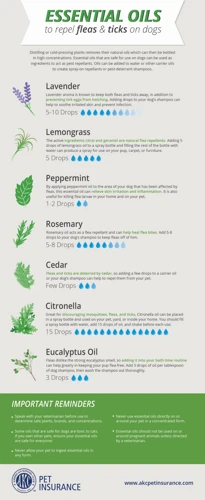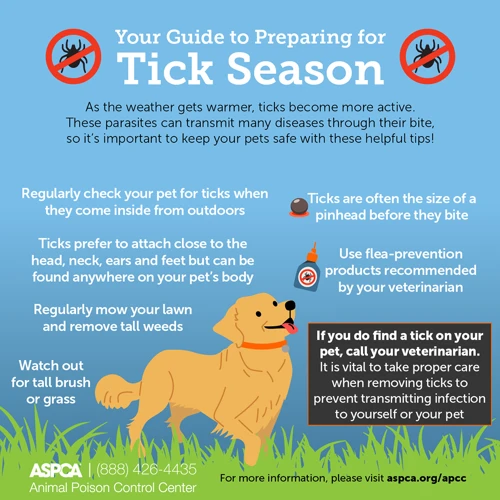As a California Spangled owner, keeping your feline friend free from fleas and ticks can be a daunting task. These pesky parasites not only cause discomfort to your cat but can also spread diseases. It’s essential to take preventative measures for flea and tick control to keep your pet healthy and happy. There are various methods of flea and tick control available, including medication, topical treatments, flea collars, and flea combs. There are home remedies and cleaning tips to help keep your home and cat free of these pests. But what steps should you take if your beloved pet already has fleas or ticks? In this article, we will guide you through effective flea and tick control methods for your California Spangled, so you can keep your furry friend free from pesky parasites and ensure their optimal health and well-being.
Flea and Tick Prevention Methods

Protecting your California Spangled from fleas and ticks is an important aspect of cat ownership. These parasites can cause a host of health problems for your feline friend, from irritation and discomfort to more serious issues like anemia and Lyme disease. Luckily, there are several effective prevention methods you can use to keep your cat healthy and happy. In this section, we will explore various flea and tick prevention options, including medications, topical treatments, flea collars, and flea combs. It’s essential to take steps to prevent parasites from infesting your cat, and this guide will help you do just that. You can also read more about the importance of parasite prevention for your California Spangled.
1. Medications
When it comes to flea and tick control for your California Spangled, one of the most efficient methods is through medication. There are various types of medications that you can use to protect your feline friend from these pesky parasites. Let’s take a closer look at some of them below:
| Medication Type | Usage | Pros | Cons |
|---|---|---|---|
| Oral Tablets/Capsules | Oral medications such as Heartgard are given once a month to protect against fleas, ticks, and heartworms. | – Convenient and hassle-free – Effective against multiple parasites at once – Prevents heartworm disease |
– Can cause side effects such as vomiting and diarrhea – May not be suitable for cats with certain medical conditions |
| Spot-on Treatments | A liquid medication applied to the back of the neck once a month. Some brands also offer flea and tick collars. | – Easy to apply – Provides long-lasting protection – Water-resistant |
– Can cause skin irritation or allergic reactions – Can be toxic if ingested |
| Injectable Medications | A long-lasting injection that protects against fleas and ticks for up to six months. | – Convenient and hassle-free – Long-lasting protection – Ideal for cats who do not tolerate topical treatments |
– Expensive – Can cause side effects such as vomiting and diarrhea – Not suitable for cats with certain medical conditions |
It is important to consult your vet to determine which medication is most suitable for your California Spangled, as different cats may have different reactions to certain medications. In addition to medication, there are also natural remedies that can be used as an alternative to chemical treatments.
2. Topical Treatments
One of the most popular methods for flea and tick control in California Spangled cats is topical treatments. These treatments come in the form of spot-on products that are applied directly to the skin of your cat’s neck, back, or shoulders. The active ingredients in these treatments can kill fleas and ticks on contact or within a few hours of application.
How do they work? Topical treatments use insecticides like imidacloprid or fipronil to kill and repel fleas and ticks. The product spreads over the cat’s skin and into its sebaceous glands. From there, it is distributed throughout the cat’s body, providing long-lasting protection. Topical treatments can be used as a preventive measure or a treatment for an existing flea or tick infestation.
Advantages of Topical Treatments
– They are easy to apply and provide long-lasting protection.
– They are effective in killing both fleas and ticks.
– They can also help in preventing other parasites like mosquitoes or lice.
Disadvantages of Topical Treatments
– Some cats may develop skin irritation or allergic reactions to certain topical treatments.
– It is crucial to use the appropriate dosage for your cat’s weight, as overdose can cause toxicity and severe side effects.
– Topical treatments do not prevent against all types of parasites, and thus it is essential to use additional methods, especially in high-risk areas.
When choosing a topical treatment, it is crucial to consult with your veterinarian, who can recommend the most appropriate product for your cat based on its age, weight, and overall health condition. It is also crucial to follow the instructions carefully and avoid using products that are designed for other types of animals.
Topical treatments are an effective and convenient way of controlling fleas and ticks in California Spangled cats. However, it is essential to use them in combination with other methods for comprehensive parasite control. Regular checks for parasites and prompt treatments are vital for keeping your cat healthy and parasite-free.
3. Flea Collars
Flea collars are another option for controlling fleas and ticks on your California Spangled cat. These collars are designed to release chemicals that either repel or kill fleas and ticks. When choosing a flea collar, look for one that is specifically designed for cats and that contains an insecticide like pyrethrin or imidacloprid.
How flea collars work
Flea collars work by releasing a chemical that spreads throughout your cat’s fur. As your California Spangled cat moves around, the chemical is released into the surrounding environment. The chemical can either kill fleas and ticks on contact or repel them from your cat’s fur.
It’s important to note that not all flea collars are created equal. Some flea collars are more effective than others, depending on the active ingredient and how it is released. Flea collars that contain pyrethrin are generally more effective than those that contain only essential oils.
Pros and cons of flea collars
Like all flea and tick control methods, flea collars have their pros and cons. Here are the main ones to consider:
| Pros | Cons |
|---|---|
| Convenient – once you put on a flea collar, you don’t have to worry about flea prevention for several months. | The chemicals in flea collars can be toxic to both your cat and to humans. You need to make sure that you use a flea collar that is specifically designed for cats, and that you follow the instructions carefully |
| Flea collars are effective at killing and repelling fleas and ticks | Flea collars can cause skin irritation or allergic reactions in some cats |
Tips for using flea collars
When using a flea collar to control fleas and ticks on your California Spangled cat, there are a few things to keep in mind:
– Always follow the manufacturer’s instructions carefully.
– Make sure that the collar isn’t too tight, as this can cause discomfort or even injury to your cat.
– Keep an eye on your cat for signs of skin irritation or other adverse reactions.
– Remember that flea collars are just one tool in your flea and tick prevention arsenal. It’s still important to regularly clean your home and keep your cat’s bedding and toys clean.
Using a flea collar on your California Spangled cat can be an effective way to control fleas and ticks, but it’s important to use them correctly and to also regularly clean your home. For more information on parasites and how to keep your cat safe, see our previous articles on California Spangled parasites and parasites at home, as well as our article on parasite control.
4. Flea Combs
One of the most effective ways to control fleas and ticks on your California Spangled is through the use of flea combs. Flea combs are a simple and natural way of removing fleas and their eggs from your pet’s fur. These combs have tightly spaced teeth that can catch fleas and remove them from the fur. In order to use flea combs effectively, you need to follow some steps.
Step 1: Prepare your Pet
Before you start using the flea comb, make sure your California Spangled is comfortable and relaxed. Gently pet your cat or offer some treats to make them feel more at ease. Make sure to comb your pet in a well-lit area so you can see the fleas and their eggs.
Step 2: Comb your Pet
Start combing your cat’s fur with the flea comb, starting at the head and working down to the tail. Pay particular attention to the neck, behind the ears, and under the legs, as these are common areas for fleas to hide. Make sure you comb in the direction of hair growth, and make sure you comb down to the skin’s surface. Keep a cup of soapy water nearby and dip the comb in it after each stroke to kill any fleas you’ve caught.
Step 3: Repeat as Necessary
Continue combing your California Spangled until you have combed through the entire coat. It’s essential to check each stroke for any fleas or eggs you might have missed. Repeat until you no longer find any fleas or eggs on the comb.
Step 4: Clean Up
When you’re done, dispose of the soapy water and any fleas you have removed. Wash your hands, and sanitize the comb before storing it for next time.
Flea combs are safe to use on your cat; however, if your California Spangled has a severe flea infestation, it’s wise to consult a vet for additional treatment. With regular use, flea combs can be an essential tool in preventing fleas and ticks from infesting your pet and your home.
Home Remedies for Flea and Tick Control

If you’re looking for natural ways to keep fleas and ticks away from your California Spangled, you’re in luck. There are several effective home remedies that can safely repel these pesky parasites without the need for harsh chemicals. Some of these remedies involve common household ingredients, while others utilize natural extracts and oils. Keep reading to learn about the best home remedies for flea and tick control that you can try today.
1. Apple Cider Vinegar Spray
Apple cider vinegar (ACV) spray is a natural and effective way to control fleas and ticks on your California spangled cat. ACV contains acetic acid which is harmful to fleas and ticks, and it also helps to maintain the pH balance of your cat’s skin.
Ingredients needed for making ACV Spray:
| Ingredients | Amount |
| Water | 1 cup |
| Apple Cider Vinegar | 1 cup |
| Lemon juice | 1 teaspoon |
| Witch Hazel | 1 teaspoon |
| Essential oils (optional) | 3-4 drops |
Instructions:
1. Mix one cup of water with one cup of apple cider vinegar in a spray bottle.
2. Add one teaspoon of lemon juice and one teaspoon of witch hazel to the mixture.
3. If desired, add three to four drops of essential oils such as lavender or peppermint for added scent and flea control.
4. Shake well before using.
5. Spray the mixture onto your cat’s fur, making sure to avoid the face and eyes.
6. Repeat as necessary, but avoid overuse as it can cause dryness of the skin.
It is important to note that while ACV spray is a natural and safe method of flea control, it should not be used as a replacement for veterinarian-prescribed medications. If your California spangled cat has a severe flea infestation, consult with your vet before using ACV spray.
Additionally, ACV spray can also be used as a preventive method against fleas and ticks. Simply spray the mixture onto your cat’s fur before going outside or to areas where fleas and ticks are prevalent.
Using ACV spray is a safe and effective way to control fleas and ticks on your California spangled cat, without exposing them to harmful chemicals.
2. Essential Oils
Using essential oils is a natural and safe way to repel fleas and ticks from your California Spangled. Some essential oils are toxic to cats, so it’s important to research safe oils before using them. Here are a few effective essential oils to use:
- Lavender oil: This oil has a calming effect on cats and repels fleas. Mix a few drops of lavender oil with water and spray it on your cat’s fur.
- Lemongrass oil: This oil has a strong scent that repels fleas and ticks. Mix a few drops with water and spray it on your cat, or add it to a diffuser in your home.
- Cedarwood oil: This oil is a natural flea repellent and can be applied directly to your cat’s fur. It also has properties that help soothe irritated skin if your cat has already been bitten.
- Eucalyptus oil: This oil is toxic to cats if ingested, but is safe to use topically to repel fleas and ticks. Mix a few drops with water and spray it on your cat’s fur, or add it to a diffuser in your home.
It’s important to note that essential oils are not a substitute for other flea and tick prevention methods. They should be used in conjunction with other methods for maximum effectiveness. Additionally, it’s important to dilute the oils before use, and to never apply them directly to your cat’s skin without the guidance of a veterinarian.
3. Diatomaceous Earth
Diatomaceous Earth is a natural substance that can help control flea and tick infestations in your California Spangled cat’s environment. It’s made from fossilized diatoms, which are microscopic algae that have silica shells. These shells are crushed into a fine powder that feels like talc and can be sprinkled in areas where fleas and ticks are likely to lurk. Here are some ways that you can use diatomaceous earth to control fleas and ticks:
- Use food-grade diatomaceous earth. Only use diatomaceous earth that’s labeled as “food grade” to ensure that it’s safe for your cat to be around. Non-food grade diatomaceous earth can contain other chemicals that may be harmful to your cat’s health.
- Sprinkle it on your cat’s bedding. Fleas and ticks like to hide in soft and warm areas like your cat’s bedding. Sprinkling a light dusting of diatomaceous earth on their bed can help to repel these pests.
- Apply it to carpet and furniture. Carpet and furniture are also popular hiding spots for fleas and ticks. Sprinkling diatomaceous earth in these areas and leaving it for a few hours before vacuuming can help to reduce the population of these pests.
- Use it as a natural repellent. Diatomaceous earth can also be used as a natural repellent against fleas and ticks. Sprinkle it around areas where your cat spends time, like the porch or yard, to keep these pests away.
While diatomaceous earth is generally considered safe for cats, it’s still important to be cautious when using it. Avoid getting the powder in your cat’s eyes, nose, or mouth as it can be irritating. You should also wear gloves and a mask when handling the powder to avoid inhaling it. With proper precautions, diatomaceous earth is a safe and effective way to control fleas and ticks in your California Spangled cat’s environment.
Cleaning Tips to Control Fleas and Ticks

Keeping your California Spangled cat safe from fleas and ticks requires more than just medication or applying topical treatments. You also need to ensure that your home is free of these pesky pests. Fleas and ticks can hide in carpet fibers, bedding, and furniture, making them difficult to get rid of. In this section, we’ll explore some effective cleaning tips to help control fleas and ticks in your home and keep your feline friend healthy and happy. Let’s dive in!
1. Vacuuming
One of the most effective ways to control and prevent flea and tick infestations in your California Spangled cat and home is by vacuuming frequently. Fleas and ticks are not only found on your cat but they can also be found in your home, especially on your carpets, rugs, and furniture. Vacuuming is important because it can remove the adult fleas, eggs, and larvae that may be hiding in the fibers of your carpet and furniture.
To properly vacuum for flea and tick control, follow these steps:
- 1. Vacuum all areas of your home – Make sure to vacuum every room in your home, paying close attention to areas where your cat spends the most time.
- 2. Use the right vacuum – Use a vacuum with a strong suction power and a HEPA filter to ensure that the fleas and ticks are trapped and not released back into the air.
- 3. Vacuum all surfaces – Vacuum all surfaces including carpets, area rugs, furniture, baseboards, and upholstery.
- 4. Dispose of vacuum contents properly – After vacuuming, dispose of the vacuum contents properly in a sealed bag and place it in an outside trash bin to prevent re-infestation.
It’s important to vacuum frequently, especially during flea and tick season, which typically lasts from spring to fall. By vacuuming regularly, you can significantly reduce the number of fleas and ticks in your home and on your California Spangled cat.
2. Washing Bedding and Toys
A great way to control fleas and ticks in your California Spangled’s environment is by washing their bedding and toys regularly. These objects can easily become infested with fleas and ticks, which can be the source of a re-infestation.
Here are some tips to follow when washing your cat’s bedding and toys:
- Ensure you wash all bedding, including blankets, pillows, and any other material your cat comes into contact with.
- Use hot water and a high heat setting when drying to ensure any eggs or larvae present are destroyed.
- Wash your cat’s toys and any items they play with regularly to prevent re-infestation. Fleas and ticks can live on these objects for a long time, so it’s important to keep them clean.
- Make sure you use a pet-safe detergent when washing your cat’s bedding and toys. Some traditional laundry detergents may have chemicals that could harm your cat.
- Don’t forget to wash any other materials, like rugs or carpets, that your cat spends time on. This will help to control the flea and tick population in your home.
By regularly washing your cat’s bedding and toys, you are taking a proactive approach to controlling fleas and ticks. It may take some effort, but it’s worth it to keep your California Spangled and your home healthy and pest-free.
3. Steam Cleaning
One effective method to control fleas and ticks in your home is steam cleaning. Not only does it kill fleas and ticks, but it also removes their eggs and larvae. Steam cleaning works by using high temperatures to kill the fleas and ticks while also loosening the dirt and debris in your carpets and furniture. Here are some steps to take when steam cleaning your home:
- Prepare the area: Before you begin, remove all clutter and debris from the area you plan to steam clean. This will allow you to have easy access to all the surfaces you plan to clean.
- Choose the right equipment: Make sure you choose a steam cleaner that is specifically designed for killing fleas and ticks. Look for a cleaner that has a high temperature and high-pressure steam to ensure it effectively kills all the fleas and ticks.
- Begin cleaning: Start by steaming the carpets, making sure to overlap each pass so you don’t miss any spots. It’s important to move slowly and deliberately to allow the steam to penetrate deep into the fibers. Next, go over any furniture, mattresses, or other surfaces that may contain fleas or ticks. Use the attachments to reach tight spaces and corners.
- Empty the water tank regularly: As you steam clean, the water tank will fill with dirt and debris. It’s essential to empty the tank regularly and replace it with clean water to avoid spreading any fleas or ticks that may have been captured.
- After cleaning: Once you’ve steam cleaned your home, allow the carpets and furniture to dry completely before allowing your cat back into the area. It’s also essential to continue using other flea and tick prevention methods to ensure that the infestation does not return.
While steam cleaning can be an effective method for controlling fleas and ticks, it’s important to note that it may not be the best approach for everyone. If you have a large infestation, it may be better to consult with a professional exterminator. However, if you have a mild infestation or want to take preventative measures against fleas and ticks, steam cleaning could be an excellent option for you.
What to do if Your Cat has Fleas or Ticks
It’s understandable to feel stressed and overwhelmed when discovering that your beloved California Spangled has fleas or ticks. These pesky parasites can lead to discomfort and even health issues for your feline friend. However, it’s essential to take action quickly to prevent the infestation from spreading. In this section, we’ll guide you through the necessary steps to take if your cat has fleas or ticks so that you can tackle the problem effectively. Let’s dive into it.
1. Visit the Vet
Taking your California Spangled to the vet is a crucial step when it comes to flea and tick control. A veterinarian can evaluate your cat’s health, recommend treatments, and suggest preventative measures to keep fleas and ticks away from your pet. It is essential to schedule regular checkups with your vet to monitor your cat’s overall health and detect any flea or tick infestations early on.
During your visit, you should inform your vet about any symptoms you have observed in your cat, such as excessive scratching or biting. The vet can then examine your cat’s fur and skin for signs of fleas or ticks, including physical presence, bite marks and irritated skin. They can also perform a comprehensive flea and tick control exam that includes both a blood test and a skin test.
If fleas or ticks are detected, the vet will recommend suitable medications for treatment. It is best to follow their instructions regarding dosage and administration of the medication. Some common medications prescribed by vets for flea and tick control include oral medications, flea collars, spot-on treatments and sprays. The vet may also suggest preventative measures such as keeping your cat indoors or applying flea and tick repellents.
It is important to note that homemade remedies or over-the-counter flea and tick products may not be effective against severe infestations and can even be dangerous for your cat’s health. Using veterinarian-recommended products and following their advice is the safest and most effective way to control fleas and ticks on your California Spangled.
Below is a table showcasing common flea and tick medications prescribed by vets:
| Medication | Description |
|---|---|
| Bravecto Chewables | Oral medication effective for 12 weeks against fleas and ticks |
| Revolution | Monthly topical medication that prevents heartworm, fleas, ticks, and more |
| Frontline Plus | Monthly topical medication that kills fleas and ticks at all life stages |
| Seresto Flea and Tick Collar | Collar that releases flea and tick medication for up to 8 months |
Remember, prevention is key when it comes to flea and tick control. Regular veterinary checkups and preventative measures recommended by your vet can keep fleas and ticks away from your California Spangled and ensure their health and happiness.
2. Bathing Your Cat
When it comes to flea and tick control for your California Spangled, bathing is another effective method. While cats aren’t typically fond of water, there are ways to make the process less stressful for both of you. Here are some tips for bathing your cat:
- Choose the right shampoo: Make sure to use a shampoo that is specifically formulated for cats. Avoid using human shampoo, as it can be too harsh and strip the natural oils from your cat’s coat.
- Prepare ahead of time: Fill a bucket or sink with warm water and have towels on hand. It’s also a good idea to wear long sleeves and gloves to protect your skin from scratches.
- Brush your cat beforehand: Brushing your cat before the bath can help remove loose hair and mats, making it easier to wash their coat.
- Keep the water temperature comfortable: Make sure the water is warm but not too hot, as cats are sensitive to temperature. Test the water with your wrist before placing your cat in the water.
- Wet your cat’s coat: Use a cup or handheld showerhead to wet your cat’s coat thoroughly. Be sure to avoid getting water in their ears and eyes, and be gentle around their face and head.
- Apply the shampoo: Apply a small amount of shampoo to your cat’s coat, starting at their neck and working your way down to their tail. Massage the shampoo in gently, and be sure to rinse thoroughly.
- Rinse well: Use the cup or showerhead to rinse your cat’s coat thoroughly, making sure to remove all the shampoo from their fur. Leaving any shampoo behind can cause skin irritation.
- Dry your cat: Use a towel to gently absorb the excess water from your cat’s coat. You can also use a blow dryer on a cool setting, but be sure to keep it a safe distance from your cat’s skin.
While bathing your cat may not be their favorite activity, it can help control fleas and ticks and keep their coat looking healthy and clean. Remember to reward your cat with treats and praise for their cooperation during the process.
3. Treating Your Home
When your California Spangled brings fleas or ticks into your home, it’s important to treat your environment to prevent further infestations. Here are some effective home treatments to get rid of these pesky pests:
| Vacuuming | Washing | Steam Cleaning |
|---|---|---|
| Vacuuming your floors, carpets, and furniture can help remove fleas, ticks, and their eggs. Be sure to focus on areas where your cat spends the most time, such as around their bed or favorite spot on the couch. | Washing your cat’s bedding, as well as any blankets or toys they frequently use, in hot water can kill fleas and ticks. You can also wash your own bedding and clothing if your cat likes to cuddle with you. | Steam cleaning can be an effective way to kill fleas and ticks in carpets and furniture. The high temperature of the steam can penetrate deep into fibers, killing any pests hiding inside. |
It’s important to note that these treatments may need to be repeated several times to fully eliminate all fleas and ticks in your home. Additionally, it’s important to keep your California Spangled on year-round flea and tick prevention to prevent future infestations.
Conclusion
After considering the various options available for controlling fleas and ticks on your California Spangled, it is clear that a combination of prevention methods and home remedies may be the most effective approach. Medications, topical treatments, flea collars, and flea combs can all provide relief, but it is important to read the labels carefully and discuss with your veterinarian before use.
In addition to these methods, there are also natural remedies such as apple cider vinegar spray, essential oils, and diatomaceous earth that can be used in a safe and effective manner. It is important to note that while these methods may be beneficial, they should not replace regular veterinary care or professional pest control services.
Keeping a clean home environment is also crucial to reducing the likelihood of flea and tick infestations. Regular vacuuming, washing bedding and toys, and steam cleaning can all help to eliminate eggs and larvae.
If your cat does contract fleas or ticks, it is important to seek veterinary care and to give them a thorough bath. Treating your home and environment may also be necessary to fully eliminate the pests.
Overall, the key to effective flea and tick control is consistency and a combination of approaches. With a little effort and attention, you can effectively protect your feline friend from these pesky parasites and ensure a happy and healthy life for your beloved California Spangled.
Frequently Asked Questions
1. Can fleas and ticks cause health problems in my California Spangled?
Yes, fleas and ticks can cause health problems in your cat, including skin irritations, allergic reactions, anemia, and even the transmission of diseases.
2. Which flea and tick prevention medication is best for my California Spangled?
The best flea and tick prevention medication for your cat depends on various factors, such as your cat’s age, weight, and overall health. Consult with your veterinarian to determine which medication is most suitable for your cat.
3. Do flea collars really work to prevent fleas and ticks?
Flea collars can be effective in preventing fleas and ticks, but their effectiveness depends on the specific collar and the cat’s individual needs. Some collars also have potential risks, such as toxicity, so it’s important to do your research and talk to your vet before using one.
4. Can I use essential oils as a natural flea and tick prevention method?
Yes, certain essential oils can repel fleas and ticks, but you should always dilute them properly and use caution when applying them to your cat or around your home. Some essential oils can be toxic to cats and can cause adverse reactions.
5. Is diatomaceous earth safe to use around my California Spangled?
Diatomaceous earth is safe to use around your cat, but it’s important to use food-grade diatomaceous earth and follow the proper application instructions. Additionally, it can cause skin and lung irritation, so it’s important to use protective gear when applying it.
6. How often should I vacuum to control fleas and ticks in my home?
Vacuuming once or twice a week can help control fleas and ticks in your home. Make sure to vacuum all areas where your cat spends time, including carpets, furniture, and pet bedding.
7. Can I treat my California Spangled for fleas and ticks without visiting the vet?
It’s not recommended to treat your cat for fleas and ticks without first consulting with a veterinarian. Your vet can recommend the most effective and safe treatment options for your cat and can also examine your cat for any potential health issues.
8. How can I tell if my cat has fleas or ticks?
You may notice signs of itching, scratching, or biting in your cat, as well as small black or brown specks on your cat’s skin or fur (which can be flea feces). Ticks can be seen and felt as small bumps on the skin.
9. Can I use human flea and tick treatments on my California Spangled?
No, it’s not safe to use human flea and tick treatments on your cat. These treatments can contain ingredients that can be dangerous for cats.
10. Are there any natural cleaning products I can use to control fleas and ticks in my home?
Yes, certain natural cleaning products can be effective in controlling fleas and ticks in your home, such as white vinegar and baking soda. Consult with your veterinarian for specific recommendations and instructions.







